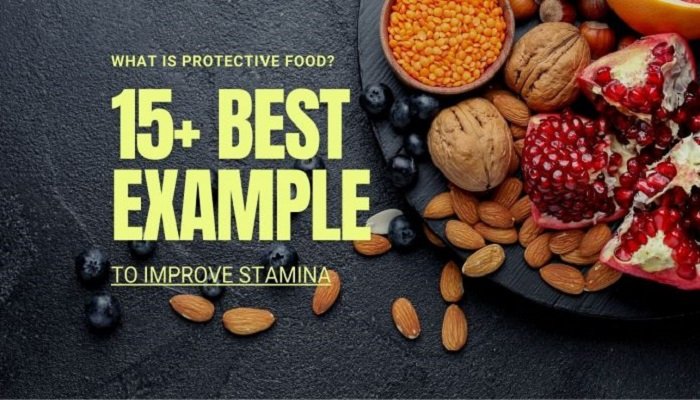Health
Insurance Code for Removal of Excess Abdominal Skin Folds

The insurance code for removal of excess abdominal skin folds is L8491. This code is used to describe the removal of extra skin and tissue from the abdomen that can cause pain or interfere with daily activities. This procedure is also known as an abdominoplasty, or a tummy tuck.
The insurance code covers both inpatient and outpatient procedures, as well as pre-operative and post-operative care.
If you are considering surgery to remove excess abdominal skin folds, also known as an abdominoplasty, you may be wondering what the insurance code is for this procedure. The good news is that most insurance companies will cover at least a portion of the cost of this surgery if it is deemed medically necessary. There are a few different codes that can be used for an abdominoplasty, depending on the specific circumstances.
The most common code used is 15530, which covers the removal of excess skin and fat from the abdomen. This code can be used for both partial and full abdominoplasties. If your surgeon also tightens the abdominal muscles during your procedure, an additional code (14960) may be used.
As with any surgery, there are always some risks involved. Be sure to discuss these with your surgeon prior to scheduling your procedure so that you can make an informed decision about whether or not this surgery is right for you.
How to Get Insurance to Cover Skin Removal
If you’re looking to get insurance to cover skin removal, there are a few things you’ll need to do. First, you’ll need to consult with your doctor to see if they believe the surgery is medically necessary. Once you have documentation from your doctor, you can then start the process of filing a claim with your insurance company.
Most insurance companies will require that you try other methods of treatment before they will approve coverage for skin removal surgery. This means that you may need to try things like topical creams or radiation therapy before your insurance company will agree to pay for the surgery. However, if your doctor believes that surgery is the best course of treatment, they will likely work with you and your insurance company to help get the surgery covered.
When it comes time to file a claim, be sure to have all of your documentation in order. Your insurance company will want to see proof of medical necessity, as well as any quotes or estimates for the cost of the surgery. If everything looks in order, your claim should be approved and you’ll be on your way to getting the skin removal surgery that you need!
What are the Codes for Panniculectomy?
Panniculectomy is a type of surgery that removes excess skin and fat from the lower abdomen. The procedure is also known as an abdominal panniculectomy or an apronectomy. Panniculectomies are typically performed to treat patients who have undergone massive weight loss and are left with large amounts of excess skin.
This can cause physical pain and discomfort, as well as problems with hygiene. Panniculectomies can also be performed for cosmetic reasons. The codes for panniculectomy vary depending on the extent of the surgery.
A partial panniculectomy (CPT code 15830) involves removal of the excess skin and fat from below the belly button. A full panniculectomy (CPT code 15831) includes removal of all the excess skin and fat from the lower abdomen, including any tissue that hangs over the pubic area (known as a paunch). In some cases, liposuction may be used in addition to or instead of a panniculectomy (CPT code 15832).
As with any surgery, there are risks associated with panniculectomies. These include bleeding, infection, blood clots, and adverse reactions to anesthesia. However, these risks are generally low and most patients experience no complications following their surgery.
What is the Cpt Code for Removal of Abdominal Fat?
The CPT code for removal of abdominal fat is 41500. This code is used to report the surgical procedure known as liposuction, or suction-assisted lipectomy, of the abdomen. Liposuction is a surgical procedure that removes fat from the body using a suction device.
The CPT code for removal of abdominal fat includes both subcutaneous and intra-abdominal fat.
What is the Cpt Code 15847?
CPT code 15847 is a medical code that describes the removal of skin from the breast. This procedure is also known as a skin-sparing mastectomy or nipple-sparing mastectomy. It is often performed in cases of breast cancer, where the goal is to remove as much of the cancerous tissue as possible while sparing as much healthy tissue as possible.
The CPT code 15847 can be used for either partial or total removal of skin from the breast.
What is Procedure Code 15830?
Procedure code 15830 is a medical code used to describe the surgical procedure known as Mohs micrographic surgery. This type of surgery is used to treat skin cancer, and is considered to be the most effective method of treating this disease. The procedure involves removing the cancerous tissue layer by layer, and examining each layer under a microscope.
Once all of the cancerous tissue has been removed, the wound is then closed with stitches or skin grafts.
Conclusion
In order to remove excess abdominal skin folds, also known as panniculus, you must have a valid insurance code. The most common codes used are 15730 and 15830. These codes are designated for the removal of extra skin and tissue in the abdominal area that hangs down below the waistline.
It is important to note that not all insurance companies will cover the removal of excess abdominal skin folds, so it is important to check with your provider beforehand.
Health
Indian Food That Women Should Avoid While Pregnancy
Pregnancy is a beautiful and crucial phase in a woman’s life. During this period, maintaining a healthy diet is essential for both the mother and the developing baby. While Indian cuisine is rich in flavors and nutrients, there are certain foods that should be avoided to ensure a safe and healthy pregnancy. Here’s a guide to Indian foods that women should avoid during pregnancy.
Pregnancy can be a very delicate time in a woman’s life. Every visit to the baby scan clinic, each signal, every problem, has a lot to do with your pregnancy. Just like waiting for your baby to kick, so do the scans. Every woman desires spicy foods during pregnancy but needs Food That Women Should Avoid While Pregnancy. It is important to be able to control your diet by having a good understanding of different food types.
Here is the list of some Avoiding foods that a woman should contain while pregnant also we can know about What Is Protective food? 15+ Best Example To Improve Stamina
Salty foods While pregnancy
Some women feel the need to eat salty and spicy foods while pregnant. Although salty foods can be satisfying during pregnancy, high salt levels can cause increased water retention that can lead to serious pregnancy complications.
Street food While pregnancy
Avoid street food. These foods should be avoided while pregnant. Pregnant mothers are very sensitive and should be cautious about what foods they eat. These foods may be prepared with contaminated water, unclean utensils, or improperly stored ingredients, which can lead to foodborne illnesses. To stay safe, it’s best to avoid street food during pregnancy.
Aloe vera While pregnancy
Aloe vera may cause premature contractions. It can also affect your uterus. Consuming aloe Vera can cause nausea and vomiting. It can also be dangerous for unborn babies. Avoid consuming aloe during pregnancy. It can cause miscarriage during the second trimester.
Chicken While pregnancy
Pregnant women may find chicken harmful. Chicken meat can have a number of bacteria and parasites which can pose a health risk to your baby. Eye problems, epilepsy, and disabilities are some of the most common health issues for women.
Raw eggs Food While pregnancy
Most miscarriages are caused by second-trimester miscarriage. This is due to food with raw eggs. They are at higher risk of increasing Grade 2 fatty liver contracting the Salmonella virus, which can cause many complications during pregnancy.
Papaya and Pineapple
While fruits are generally considered healthy, there are a few exceptions during pregnancy. Raw papaya, especially its unripe form, contains an enzyme called papain, which can trigger uterine contractions and potentially lead to miscarriage.
Pineapple is also sometimes avoided during pregnancy, as it contains bromelain, which may soften the cervix and cause early labor.
Cooked or ripe papayas and pineapples can be consumed in moderation, but it’s best to consult a healthcare provider before including them in your diet.
Conclusion
Pregnancy is a time to be extra cautious with your food choices. While Indian cuisine offers a vast array of delicious options, certain foods and preparation methods can pose risks to both the mother and baby. It’s essential to prioritize food safety and ensure that your diet is balanced, nutritious, and free from harmful substances. Always consult your doctor or a nutritionist to ensure that you’re making the best choices for a healthy pregnancy.
Health
What is Protective Food? 15+ Best examples To Improve Stamina

Food is a basic necessity for all of us and we all earn money to get this basic necessity. We need to eat 3 meals a day to keep our body running so that we can manage our daily functions. In this post, we are going to learn what is protective food, example of protective food, a List of energy-giving food & some best list of protective food. So without wasting any time let’s get started by reading below.
Kinds of Foodstuff
The food is normally divided into two main categories given below:-
1- Vegetarian food- These include stuff like milk, fruits, and vegetables. These are those stuff that is obtained from plants and trees.
2- Non- Vegetarian food- These include stuff like meat and meat products, chicken, turkey, fish, squid, etc. Non-vegetarian food is generally obtained by killing animals.
What is protective Food?
As we know for being alive Foods are very necessary for us because it gives full power of stamina. When we have not had food for six or seven hours we feel very hungry and we have no strength or energy to do anything. In this situation, we need to have “protective food“. Foods that protect our body against bacterial infection and germs as well as give us Proteins, carbohydrates, fats, vitamins, and minerals that keep us healthy and fit are called protective foods.
15 + Example of Protective Foods That Can Improve Stamina
Here are some of the best examples of a protective food list that Contains adequate amounts of vitamins, minerals, and high-quality proteins and protects against the unwanted spreading of disease that is why you need to check out the list of trending types of food to eat during covid 19.
Here is the list of Protective food names:
- Nuts and seeds
- Selfish
- cruciferous vegetables
- Organ Meats
- Eggs
- Beans
- Coca
- Avocados
- Berries
- Ancient grains
- Tropical fruits
- Paneer
- Sweet potatoes
- Cauliflower
- Seaweed
- Bell peppers
- Alfalfa sprouts
- Spirulina
- Onions
What are The Best energy-giving foods and examples?
The food which provides energy to our body and also helps to raise energy levels is called energy-giving food. Foods hold energy in the form of carbohydrates fats proteins and other organic compounds. And further this protective food transfers to the human body. You must have a variety of foods in a healthy diet plan to keep higher energy in your body during peak working conditions. Elements which is are available in food are set to intend, boost the energy such as Banana, Sugar, Rice, Barley, Wheat Flour, and Maize
The function of nutrition security food In Our Body?
It is very important to know that What is the function of protective Foods in our body is for well-being. We need to eat enough food to stay active and healthy. The food we eat should be safe and full of all the nutrients our body needs. You should have a wide variety of Protective food names and eat them daily. Good nutrition is essential for children, adolescents, and adults to reach their full potential.
Here is the list of some of the important functions of Protective foods
- growth & development
- Muscles
- Bones and teeth
- Energy
- healthy bodies
- Fighting disease
- Good brains
- Organs that are healthy
Advantage of Protective Foods in Balanced Diet
- Stay active, be active, and move to work.
- Create new cells and tissues to support the growth
- Stay healthy and help others.
- Prevent and combat infections
- Strong bones and teeth
Conclusion
In case you are right now searching for more data with respect to how your life will change when you change to Healthy Snacks and suppers, you ought to think about visiting our site for protective food, an example of protective food, list of protective & protective food picture. Here is the place where you will run over a wide scope of Healthy Food items that you can buy immediately! If you think that the above content you have read is useful for you then comment to me and share it on social media.
FAQ
Is milk a protective food?
Milk is a white liquid that is produced by the glands of women. This is basically important for a newborn baby as babies cannot feed until they are unable to consume other substances. On the other hand, it is a very protective food as many edible things are made from it such as cheese, curd and buttermilk making, paneer, and other ingredients.
Which is the most protective food?
Yellow vegetables, meat, citrus fruits, egg, milk These are example of it. Protective food contains a number of vitamins, minerals, and high-quality proteins.
Is banana a protective food?
Banana is one of the famous fruits that is eaten over the world. Especially bodybuilder consume it because banana contains a protective number of calories (89) and iron too.
What are called protective foods and why?
Protective food is fruit and vegetable because they are able to regulate body functions and help the body produce substances to fight against major diseases.
Which foods are energy-giving?
In simple language energy giving food provides energy to your body through Fats and carbohydrates.
wheat, rice, maize, millet, potato, sweet potato, sugar, etc are an example of it.
Is Carrot a protective food?
Yes, carrot is a very protective food for health. Carrot is a root vegetable that has multiple colors like purple, black, red, white, and yellow. Roots are rich in alpha- and beta-carotene, and are an excellent source of vitamin K as well as vitamin B6.
Read More: Indian Food That Women Should Avoid While Pregnancy
Health
6 Common Causes of Pain in Back of Knee When Straightening Leg

The back of the knee hurts a lot. There are a lot of things that could make your knee hurt or hurt all the time when you extend it. Tendons, cysts, torn ligaments, and nerve issues can all cause pain in back of knee when straightening leg. Why does the Back of your Knee Hurt When you Extend? Following are the few causes:
Baker’s Cyst
Baker’s cysts happen when too much synovial fluid builds up in the knee because of osteoarthritis, meniscal degeneration, or ligament tears. The joint capsule lets this fluid out, and it builds up in the back of your knee. Baker’s cysts can grow quickly or slowly, and they can cause these signs:
- A hard bump that you can press on behind your knee
- A pain when extending the leg
- Swelling in the knees or legs
- Back of the knee pain
Muscle Strain or Tears
When you extend your leg, pain in back of knee when straightening leg can be caused by a number of muscle strains or tears. Most of the time, they are:
- This is a big muscle in the calf that bends the knee and flattens the foot.
- Three muscles in the back of the thigh are called hamstrings. They flex the knee and expand the hip.
- There is a muscle in the back of the knee called the popliteus that helps the joint bend.
- Usually, strains or tears happen when you work out. Sports where you have to sprint or cut, like tennis and basketball, can be very dangerous if you aren’t flexible or don’t warm up. When you cut or jump, you often tear the gastrocnemius muscle.
Damage to Ligaments
Back-of-knee pain can be caused by multiple injuries to knee ligaments. The posterior cruciate ligament (PCL) and the posterolateral corner ligaments are part of this. Usually, these structures are hurt quickly by traumatic events like falls or blows to the leg. In addition to pain in the back of the knee, ligament injuries often make the leg unstable and make it hard to walk.
Nerve Damage
Pain can also come from nerve damage in the back of the knee. It’s mostly the common peroneal nerve that’s hurt. Most of the time, this nerve is hurt by blows to the knee, which hurt many muscles and ligaments. Not only do common peroneal nerve injuries hurt the back of the knee, they can also:
- Have trouble walking
- Dropped foot (pain in the top foot)
- Some people feel tingling and numbness in their lateral leg or foot.
- Weak muscles in the foot or ankle
Meniscus Tear
The meniscus is a C-shaped ring of cartilage that protects and supports the knee. Most of the time, meniscal tears hurt the knee, but sometimes they hurt the back. In these situations, the posterior meniscus (horn) is most often torn. Tears in the meniscus can happen slowly or quickly after a twisting injury. Not only does this condition hurt, but it can also:
- Problems with walking
- Joint pain and swelling
- Getting caught or locking
- Not enough mobility
Blood Clots
Sometimes, the pain in the back of your knee could be caused by a blood clot or DVT. Some groups are more likely to be hurt, such as
- Women who are on birth control or hormone therapy
- People over 65
- People who are overweight or obese
- People who are pregnant or who have recently had surgery
- People who smoke
- These signs can be caused by medical emergencies like:
- Blood clots
- Pain or discomfort in the back of the knee or calf
- Skin that is red or discolored
- Swelling
- Veins that are thick or swollen
It is very important to see a doctor right away if you think you might have a blood clot.
When you Should Call a Doctor
If the pain is severe, the knee is swollen and inflamed, or the person gets a fever, they should see a knee pain doctor in Dallas. If someone has had blood clots in the past, they should also make an appointment to see a doctor. They should see a doctor right away if they have any symptoms of a DVT, such as pain, swelling, or red, itchy skin. People who think they might have a DVT should get help right away. This is because pulmonary embolisms can be caused by blood clots that get to the lungs. A pulmonary embolism happens when a blood clot gets in the way of a blood vessel in the lungs.
How to Take Care of Minor Knee Pain?
A lot of different kinds of back knee pain can be treated without surgery. If your doctor thinks you have a minor muscle strain, a degenerative meniscal tear, a low-grade ligament tear, or a Baker’s cyst, they will probably tell you to start with conservative treatments. Some common at-home treatments that don’t involve surgery are medicines that stop blood clots (blood thinners).
- Putting ice on the hurt area
- Avoiding things that make you feel bad
- NSAIDs are pain relievers and inflammation killers like Advil, Motrin (ibuprofen), or Aleve (naproxen).
- Physical therapy
- Supporting or immobilizing the body
If any of the following apply to your knee pain, you may need to see a pain management in Dallas:
- In the wake of a serious injury or car accident
- If your knees aren’t stable, you’re having trouble walking, or your legs feel weak,
- If you suspect the presence of deep vein thrombosis or a blood clot,
- If the pain in your knee is getting worse or not getting better with simple treatments.
How to Diagnose?
When a doctor examines your knee, they will usually ask you where the pain is coming from and if you have any other symptoms that go with it.
- Electromyography (EMG) to check how well your nerves are working.
- An MRI scan is used to check for damage to a ligament, tendon, or meniscus.
- A scan to look for blood clots or Baker’s cysts
- X-rays to check for broken bones
Conclusion
There are many reasons for pain in back of knee when straightening leg, such as blood clots, injuries to muscles or tendons, arthritis, or cysts. Many of these problems can be fixed with physical therapy, rest, and painkillers. But sometimes, surgery is the only way to fix the problem.
-

 Entertainment2 months ago
Entertainment2 months agoUnderstand: Post-Apocalyptic Literature Bingo: Songs of Your Decay
-
Education4 weeks ago
11 Important Difference Between Seasonal Work and Internship: You Should Know
-

 Other Blog1 month ago
Other Blog1 month agoWhat is the ://vital-mag.net Blog About?
-

 Health4 weeks ago
Health4 weeks agoTop Strategies to reduce patient bad debt with Qualify Health
-

 Health1 month ago
Health1 month agoLiving Boldly with ADHD: Breaking Stigma and Stereotypes
-

 House2 months ago
House2 months ago8 Reasons Foundation Contractors Are Key to Protect Your Home’s Value
-

 Attitude Instagram Username4 days ago
Attitude Instagram Username4 days agoTop 50+ Instagram Usernames For Couples | Cute Couple Instagram Names
-

 House2 months ago
House2 months agoCarpet Cleaning Service: Can Carpet Cleaning Remove Pet Stains And Odors Effectively?




![How to Choose Home Loan in Simple Steps [Guide 2025]](https://instafrom.com/wp-content/uploads/2025/01/Untitled-design-1-80x80.jpg)
